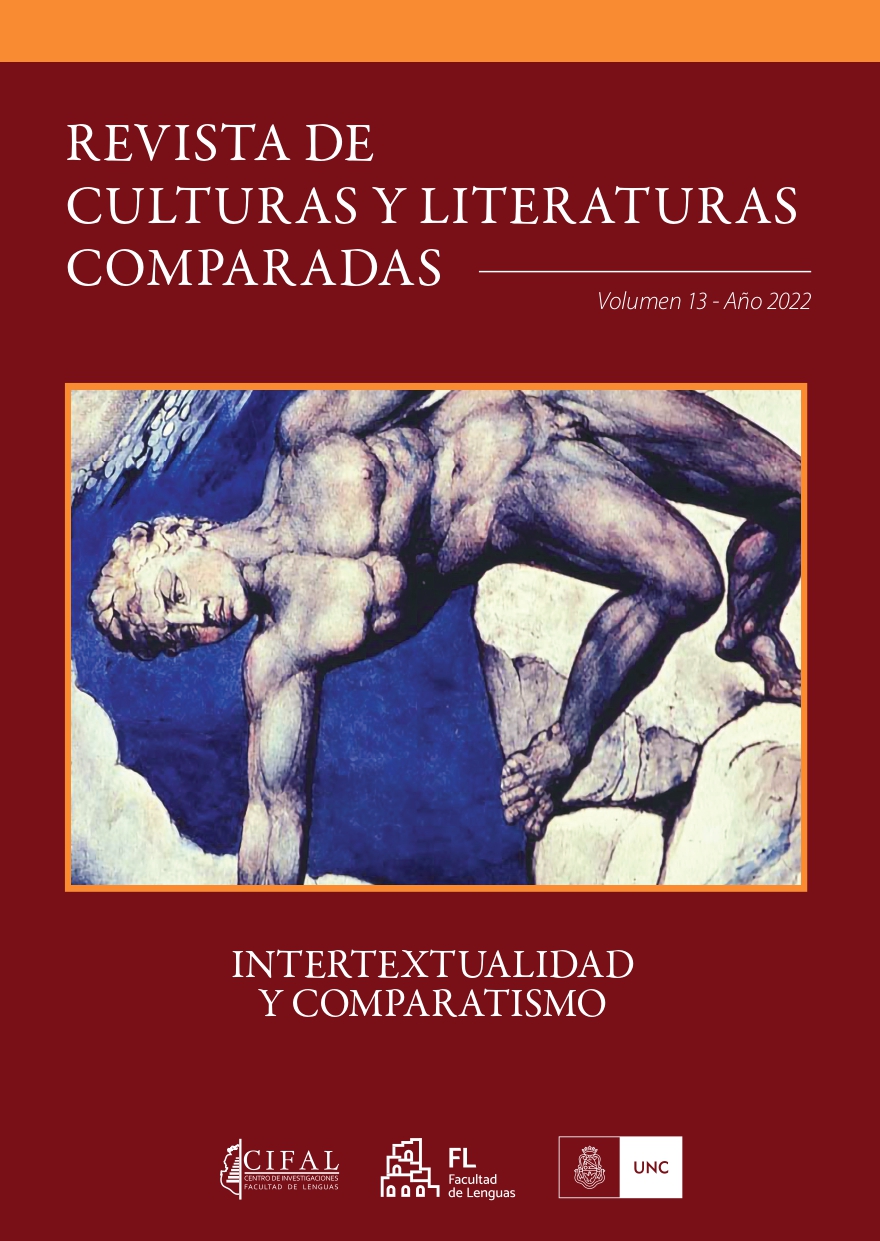The curious intertextuality of Arrow Chest (2010): its neo-Victorian interrogations
Keywords:
neo-Victorian, neo-Gothic, hyperreality, historiocopia, historioglosiaAbstract
The present article purports to delve into a singular deployment of intertextuality stemming from the fusion of two triads of doppelgängers, whose stories, which linger as fragments in the popular cultural imaginary, become additionally intertwined with the mythical tale of Apollo and Daphne. This interlacing of characters harnessed from various hypotexts takes place at the narrative core of the romantic neo-Gothic novel Arrow Chest (2011) authored by British writer Robert Stephen Parry. The article analyzes the multiple interrogations which, as a neo-Victorian text, it poses in relation to a variety of features concerning contemporary culture. Such impeachment pertains to the concept of the hyperreality that characterizes contemporary societies organized on the principle of simulation as well as the new popular epistemologies used for the consumption of history in the form of historiocopia and historioglosia.
Downloads
References
Baudrillard, Jean. “Simulacra and Simulations”. En Jean Baudrillard, Selected writings. Ed. Mark Poster. Stanford: Stanford University Press, 1988. 166-184.
Bordo, Susan. The creation of Anne Boleyn. A new look at England’s most notorious queen. Nueva York y Boston: Houghton, Mifflin, Harcourt, 2013.
Cox, Julian, y Ford, Colin. Julia Margaret Cameron. The complete photographs. Los Angeles, California: Getty Publications, 2003.
de Groot, Jerome. Consuming history. Historians and heritage in contemporary popular culture. Londres y Nueva York: Routledge, 2009.
Diccionario de la Lengua Española. Real Academia Española. Web.
Genette, Gérard. Palimpsestos. La literatura en segundo grado. 1962. Trad. Celia Fernández Prieto. Madrid: Taurus, 1989.
Heilmann, Ann y Llewellyn, Mark. Neo-Victorianism. The Victorians in the Twenty-First Century, 1999-2009. Londres y Nueva York: Palgrave Macmillan, 2010.
Jameson, Fredric. Postmodernism, or the cultural logic of late capitalism. Durham: Duke University Press, 1992.
Kellner, Douglas. “Jean Baudrillard”. The Stanford Encyclopedia of Philosophy. Edición 2015. Ed. Edward N. Zalta. Web. 20 de marzo de 2022.
Kohlke, Marie-Luise. “Introduction: Speculations in and on the neo-Victorian Encounter”. Neo-Victorian Studies 1.1 (2008): 1-18. Web. 4 de marzo de 2022.
Kohlke, Marie-Luise y Gutleben, Christian. “The (Mis)Shapes of Neo-Victorian Gothic: Continuations, Adaptations, Transformations”. Neo-Victorian gothic. Horror, violence and degeneration in the re-imagined nineteenth century. Ed. Marie-Luise Kohlke y Christian Gutleben. 1-50.
Landow, George P. “Pre-Raphaelites: An Introduction.” The Victorian Web. George P. Landow. 1987. Web. 10 de marzo de 2022.
Parry, Robert S. “Author Interview: Robert Stephen Parry on The Arrow Chest”. Historical Fiction. 31 de mayo 2015. Web. 1 de abril de 2022.
---. The Arrow Chest. Londres: Rober Parry, 2011.
Roman, Luke y Monica Roman. The Encyclopedia of Greek and Roman Mythology. Nueva York: Facts On File, 2010.
Sadoff, Dianne F. y Kucich, John. “Introduction: Histories of the Present”. Victorian afterlife: Postmodern culture rewrites the nineteenth Century. Ed. John Kucich y Dianne F. Sadoff. Minnesota y London: University of Minnesota Press, 2000. ix-xxx.
Spooner, Catherine. Contemporary gothic. Londres: Reaktion Books, 2006.
---. “Horrible Histories: Review of Marie-Louise Kohlke and Christian Gutleben’s Neo-Victorian Gothic. Horror, Violence and Degeneration in the Re-Imagined Nineteenth Century”. Journal of Neo-Victorian Studies 6. 2 (2013): 181-90. Web. 3 de abril de 2022.
Yúdice, George. El recurso de la cultura. Usos de la cultura en la era global. Trad. Gabriela Ventureira, excepto Cap. 7: Desiderio Navarro. Barcelona, España: Editorial Gedisa, 2002.
Downloads
Published
Issue
Section
License

This work is licensed under a Creative Commons Attribution-NonCommercial-NoDerivatives 4.0 International License.
Aquellos/as autores/as que tengan publicaciones con esta revista, aceptan los términos siguientes:
a) Los/as autores/as conservarán sus derechos de autor y garantizarán a la revista el derecho de primera publicación de su obra, el cual estará simultáneamente sujeto a la Licencia de reconocimiento de Creative Commons.
b) La cesión de derechos no exclusivos implica que la publicación de los artículos en la presente revista no quita la posibilidad o el derecho al autor/a de publicar su obra de manera posterior en otras revistas u órganos editoriales y la autorización por parte de los/as autores/as para que el trabajo sea depositado en los repositorios institucionales, tales como el Portal de Revistas de la Universidad Nacional de Córdoba.



